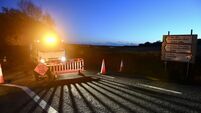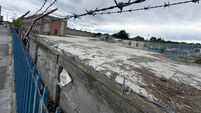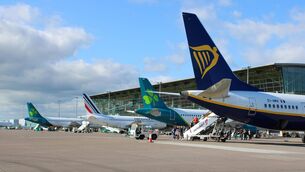Just 70 days of water in Dublin

Irish Water only has enough water in reserve to serve the capital for another 70 days, its managing director has warned.
Jerry Grant said leakages remain the utility’s greatest challenge but said the water supply will need careful management over the next few months following the summer drought, with the current hosepipe ban set to continue until October.
“Nationally, in the south, midlands, and east of the country, we are still managing with very depleted supplies, and I think the extreme weather this year, both the winter weather and now the summer droughts, has underlined the lack of resilience in our water system,” said Mr Grant.
“In Dublin in early May, we had fairly comfortable 150-day storage in our main reservoir in Poulaphouca. That’s down to 70 days in the space of less than three months, and we’re left with about 70 days of usable storage in the reservoir.
“Looking at historical records over the last 60 years, there are five or six years on record when that would have to eke out into November and possibly even as close as Christmas in one of those years.
“So, in that situation, we would get extremely tight later in the year, so what we’re asking the public to do is to conserve water, and to continue to conserve it right through the next number of months while we focus on reducing leakage as much as we can and literally hoping to eke out the supply.
“The reality of the next seven-eight years, until we can augment the supply to Dublin, is that we’re going to have to try to survive on reducing leakage, maintaining quite a strict discipline on water conservation, and hoping that we can avoid these kinds of extreme weather [events], but of course they are a reality now that we have to face.
“If we continue to get some half-decent rain falls over the next couple of months and we can continue to maintain a tight discipline on water usage, then that we should get through.”
On leakages, Mr Grant said newer pipes are as likely to cause problems as the older parts of the network.
“Our network in Dublin is about 9,000km,” he said. “25% of that existed pre-1960. A lot of that is cast iron and pretty corroded, but over 50% of it was built in the next 40 years, up to the year 2000, with very little development control, much of it developer-led, a lot of it is in very poor condition, and the reality is that the burst frequency on the pipes laid in the 1980s, 1990s, is every bit as bad as the pipes in 1930s, so the reality there’s nothing for it except to seriously sustain leakage control effort for many many years.”












